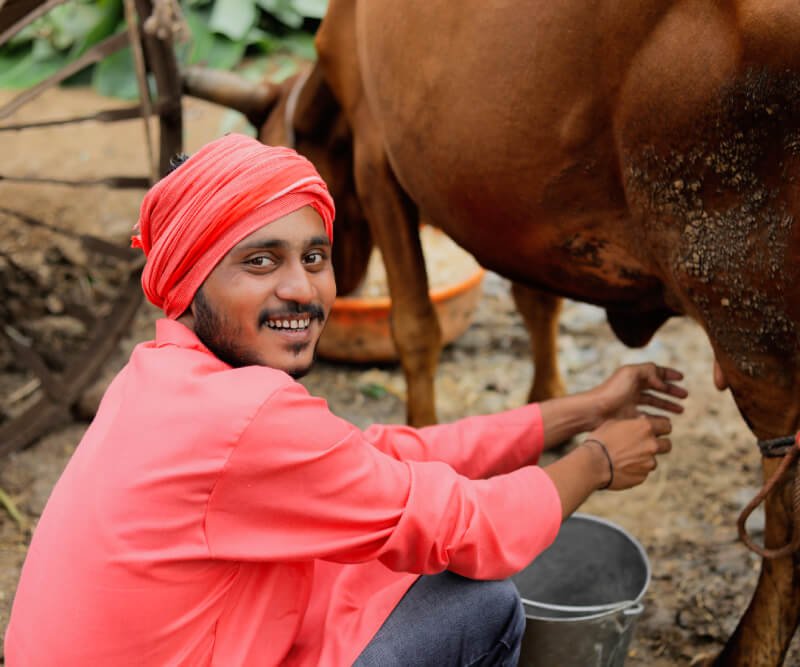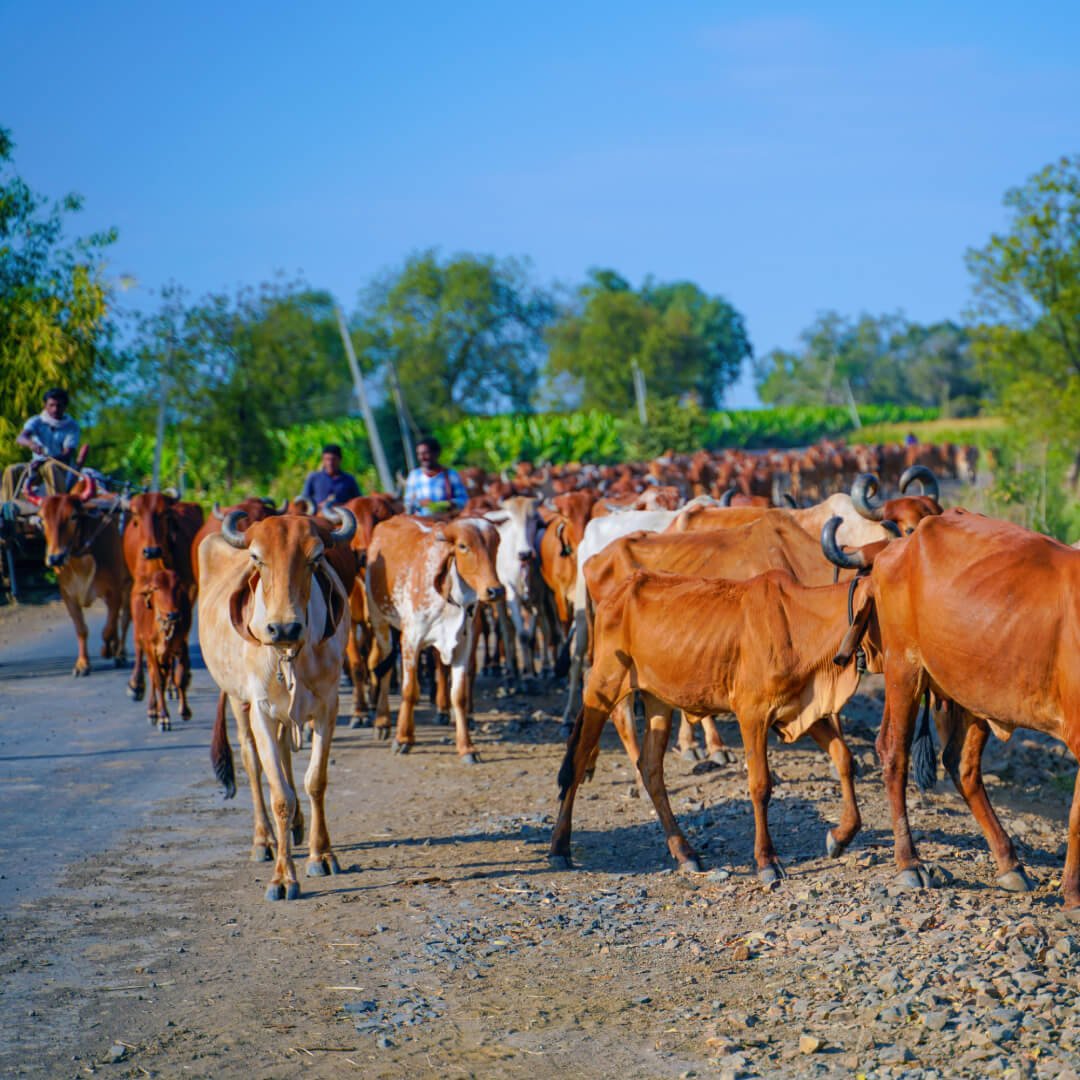Dairy & Climate Change:
- The dairy sector is a cornerstone of global agriculture, providing essential nutrients, employment opportunities, and economic growth.
- Dairy products are a significant source of protein, calcium, and vitamins, contributing to human health and nutrition.
- According to the Food and Agriculture Organization (FAO), global milk production reached approximately 828 million tonnes in 2020, with a projected annual growth rate of 1.4% over the next decade.
- Despite its importance, the dairy sector is increasingly vulnerable to the impacts of climate change, which pose significant challenges to its sustainability and resilience.
- Climate change is characterized by rising temperatures, changing precipitation patterns, and increased frequency of extreme weather events, all of which directly affect dairy farming systems worldwide.


Problems:
Heat Stress
- Prolonged exposure to high temperatures (>25°C) can lead to reduced feed intake, decreased milk production, and impaired reproductive performance in dairy cattle.
- Each 1°C increase in temperature above the thermal comfort zone can result in a 10% decline in milk yield.
Water Scarcity
- Changing precipitation patterns and increased evapotranspiration rates due to higher temperatures are leading to water scarcity in many dairy-producing regions.
- Agriculture accounts for approximately 70% of global freshwater withdrawals, with dairy farming being a significant consumer of water resources.
Forage Production:
- Climate variability, including droughts and erratic rainfall, can affect forage production and quality, leading to feed shortages and nutritional deficiencies for dairy cattle.
- Climate change is projected to reduce global forage production by up to 30% by the end of the century, with significant implications for dairy farming.
Methane Emissions:
- Enteric fermentation in ruminant livestock, including dairy cattle, is a significant source of methane emissions, a potent greenhouse gas that contributes to global warming.
- Methane emissions from livestock account for approximately 14.5% of total anthropogenic greenhouse gas emissions, with dairy cattle being one of the primary contributors.
These problems highlight the urgent need for proactive measures to address the impacts of climate change on the dairy sector and ensure its long-term sustainability and resilience.
Solutions
Addressing the challenges posed by climate change in the dairy sector requires a multifaceted approach encompassing various strategies:
- Breeding for Climate Resilience: Developing and promoting dairy cattle breeds with enhanced heat tolerance, disease resistance, and productivity under changing climatic conditions through selective breeding programs and genetic improvement. Utilizing genomic selection techniques to identify and breed animals with desirable traits suited to the local climate.
- Water Management and Conservation: Promoting the adoption of water-saving technologies and best management practices among dairy farmers to optimize water use efficiency and mitigate the impacts of water scarcity. Investing in infrastructure for rainwater harvesting, storage ponds, and efficient irrigation systems. Implementing precision irrigation techniques such as drip irrigation and soil moisture monitoring to optimize water application and minimize wastage.
- Diversification of Feed Sources: Encouraging diversification of feed sources through the cultivation of drought-resistant forage crops, legumes, and browse species suitable for dairy farming systems. Promoting agroforestry systems that integrate trees, shrubs, and pasture to enhance soil fertility, water retention, and biodiversity while providing additional feed resources for dairy cattle.
- Methane Mitigation Strategies: Implementing dietary interventions such as the inclusion of methane inhibitors, lipids, and tannins in dairy cattle diets to reduce enteric methane emissions without compromising animal productivity. Exploring the use of feed additives and supplements, such as seaweed extracts and microbial additives, to manipulate rumen fermentation and mitigate methane production in dairy cattle. Deploying methane capture and utilization technologies, including anaerobic digestion systems, biofilters, and methane oxidation catalysts, to capture and utilize methane emissions from dairy farms for energy generation or other productive purposes.


